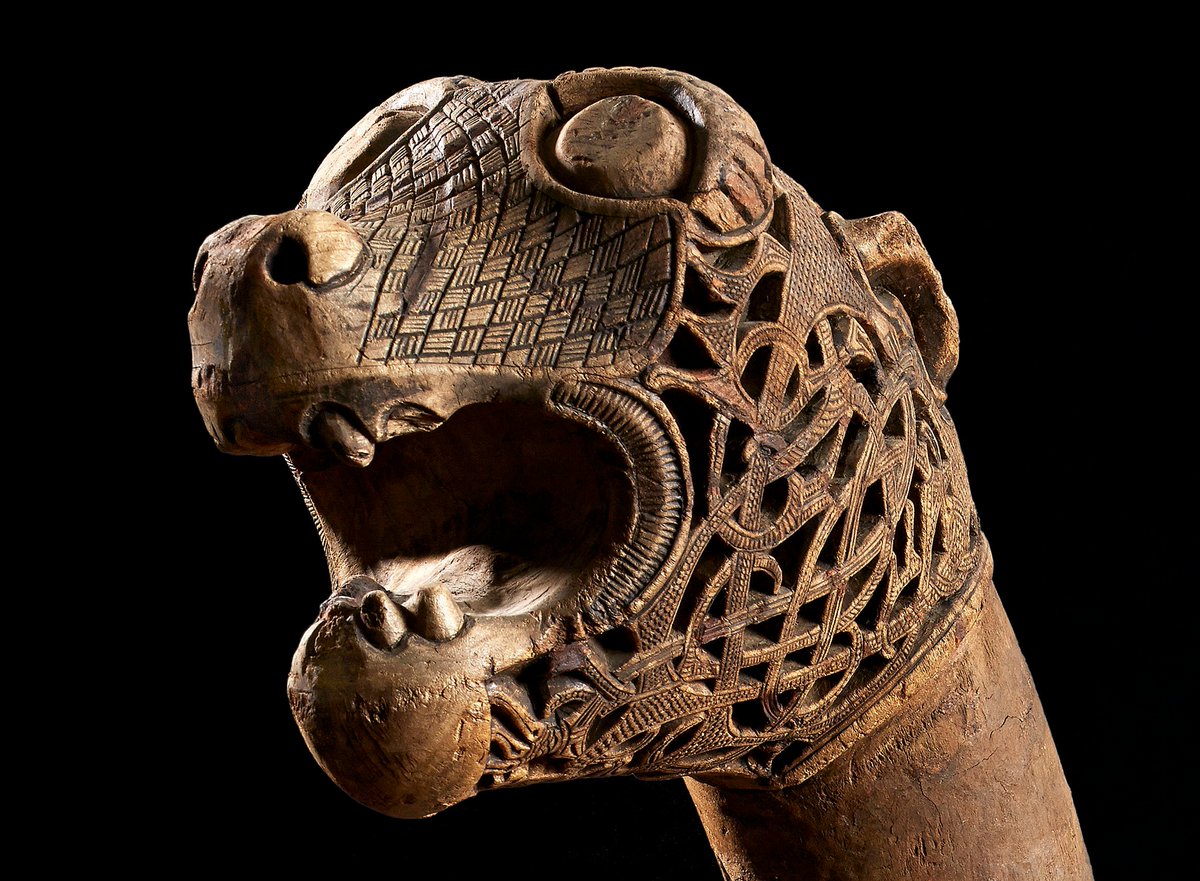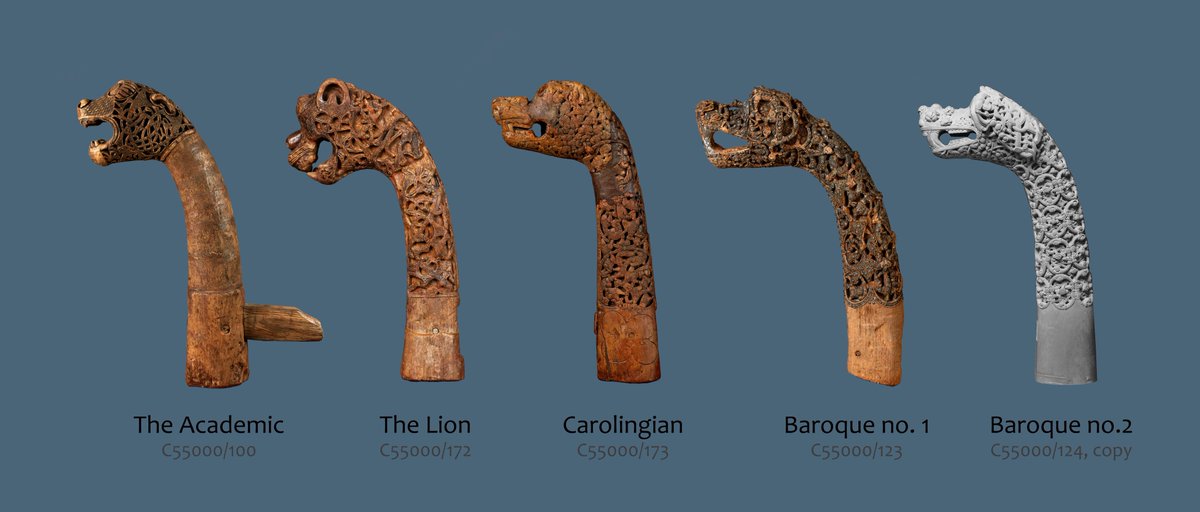
Archaeological conservator @Kulturhistorisk. Weapons and tools from the Viking Age. Good-bye Twitter...
How to get URL link on X (Twitter) App


 The grave was a cremation patch burial, a flat grave without any cairn or mound. Amongst the burnt fragments of human bone there was also identified pieces from a dog. In addition to bone there was recovered four burnt fragments of decorated antler.
The grave was a cremation patch burial, a flat grave without any cairn or mound. Amongst the burnt fragments of human bone there was also identified pieces from a dog. In addition to bone there was recovered four burnt fragments of decorated antler.



 This drawing is from a thorough publication about the Mammen axe and presents the misconseption of shape very clearly. This reconstruction of pointed lugs is ill-founded. Drawing: Orla Svensen, in publication by Ulf Näsman 1991.
This drawing is from a thorough publication about the Mammen axe and presents the misconseption of shape very clearly. This reconstruction of pointed lugs is ill-founded. Drawing: Orla Svensen, in publication by Ulf Näsman 1991.

 @Kulturhistorisk Many will have seen pictures of these animal heads found in the ship burial of Oseberg, AD 834. The heads where originally five in number: The Academic, The Lions head, The Carolingian and The Baroque head no.1 and no.2.
@Kulturhistorisk Many will have seen pictures of these animal heads found in the ship burial of Oseberg, AD 834. The heads where originally five in number: The Academic, The Lions head, The Carolingian and The Baroque head no.1 and no.2.

 The blade of the spear is also decorated. This is a form of #Patternwelding along the weld line attaching the edge steel to the core. It's often called Wolf's Tooth pattern.
The blade of the spear is also decorated. This is a form of #Patternwelding along the weld line attaching the edge steel to the core. It's often called Wolf's Tooth pattern.



 I made this #Viking #shield primarily based on those found in the #Gokstad ship burial, but also remnants from other archaeological finds and information in the writings of Theophilus 'On Diverse Arts' Chapter 17 (c.1100).
I made this #Viking #shield primarily based on those found in the #Gokstad ship burial, but also remnants from other archaeological finds and information in the writings of Theophilus 'On Diverse Arts' Chapter 17 (c.1100).https://twitter.com/VegardVike/status/960792271204618240

 Almost a year ago I took the helmet apart. It consisted of 7 fragments:
Almost a year ago I took the helmet apart. It consisted of 7 fragments:https://twitter.com/VegardVike/status/961377600391303168?s=19




 The spectacle faceplate is cleaning up nicely during micro-sandblasting. I take care not to damage the extremely shallow filling of the decorative lines - just a fraction of a millimeter deep. I need to try some XRF-analysis to possibly identify the filling material. #Gjermundbu
The spectacle faceplate is cleaning up nicely during micro-sandblasting. I take care not to damage the extremely shallow filling of the decorative lines - just a fraction of a millimeter deep. I need to try some XRF-analysis to possibly identify the filling material. #Gjermundbu 

 The #Gjermundbu helmet presented in this tweet is from a rich equestrian grave from the second half of the 10th century - a cremation burial that involved destruction/'killing' of the weapons. C27317 @Kulturhistorisk
The #Gjermundbu helmet presented in this tweet is from a rich equestrian grave from the second half of the 10th century - a cremation burial that involved destruction/'killing' of the weapons. C27317 @Kulturhistorisk